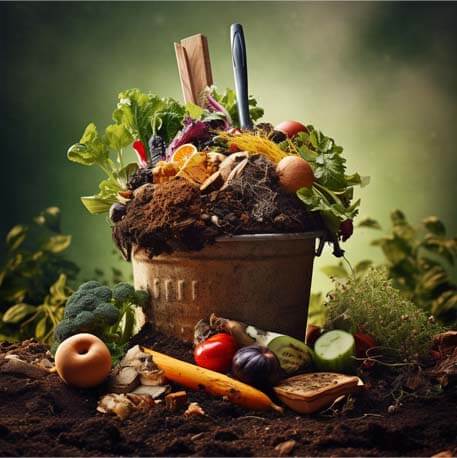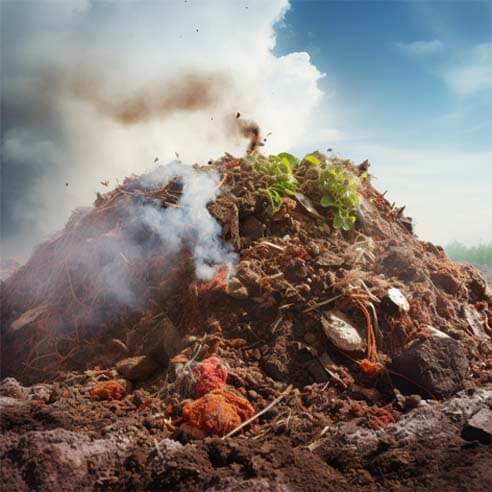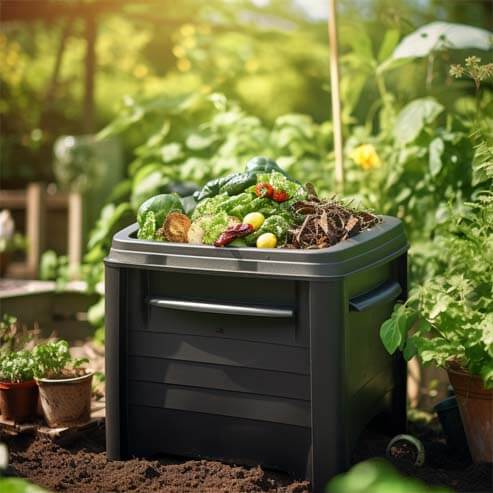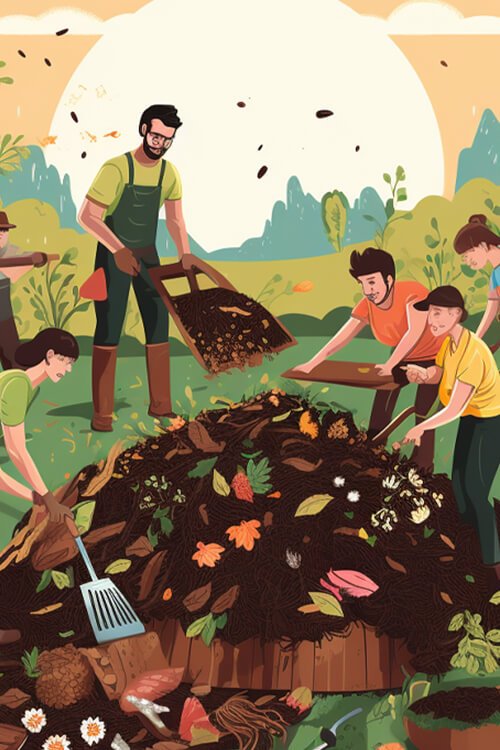No products in the cart.
How does composting work?

How does composting work?
Composting is a natural process of recycling organic waste, such as food scraps and other organic matter like wood chips, grass clippings, and coffee grounds, into a nutrient-rich fertilizer. This finished compost can then be used in backyard gardens instead of fresh manure, synthetic fertilizers, or commercial fertilizer to encourage plant growth.
If you've been wondering "how does composting work," you're in luck. In this blog, we'll discuss the composting process in greater detail, including the benefits of the compost process and some basic home composting tips to help you get started.
Benefits of the composting process
There are many benefits to backyard composting. In fact, there are very few disadvantages to turning food waste and other organic materials into a nitrogen-rich material that can be used to fertilize the garden soil of your outdoor and indoor plants. As such, this blog will focus exclusively on the benefits of the backyard composting process, including how it helps reduce food waste and greenhouse gas emissions.
Reduces food waste
If you have a compost bin at home, you already know how worm composting reduces organic waste, including garden waste. Food scraps, including coffee grounds, tea bags, and fruit and vegetable scraps, go directly into your compost bin instead of the trash can. You can even put yard trimmings, shredded paper, and paper filters (like the ones you use for coffee) into your home compost bin.
If you're concerned about your environmental impact, using what's in your compost bin as a soil amendment is a great way to reduce greenhouse emissions of food scrap waste. Why not turn food scraps into a valuable fertilizer?


Cuts excess nitrogen from landfills
When organic matter goes through the decomposition process in a landfill, it goes through aerobic decomposition. This means that it's broken down by microorganisms that require oxygen. If there's not enough air, the biological process simply won't happen.
These microorganisms give off something called "biogas", a natural by-product of the decomposition process, which is roughly 50% carbon dioxide. As you can see, transforming kitchen waste into compost materials via compost bins is a better alternative than sending food scraps, yard waste and grass clippings to landfills.
Conserves water
Did you know that when you add organic material, like cat litter and kitchen scraps, to fresh soil it actually changes the soil structure and increases its ability to retain water? Just a 1% increase in organic materials in soil means it can hold 20,000 more gallons of water per acre. While this might not seem like a lot for those who use a home compost bin or participate in worm composting, imagine if every household across America used compost bins to turn fresh grass clippings and pet waste into a nutrient-rich soil amendment for their potting soil? It adds up!

Types of home composting
There are two main types of backyard composting: passive (cold) composting and active (hot) composting. We'll discuss each a bit more before providing some tips on how to turn food scraps, kitchen waste, a wrung out sponge, and yard waste and pet waste into nitrogen-rich materials with a home compost bin.

Passive compost pile
Passive composting breaks down organic matter VERY SLOWLY, but it also requires very little effort. During this type of composting, you let Mother Nature do her job through natural decomposition. Vegetable scraps, wood chips, and yard waste will all decompose naturally...at some point. This is passive composting. Simply sit back, relax, and let nature do its thing.
A high contrast, dark typography integrates a simple sans-serif with classic and historically influenced italic serif font. Which gives their packaging a feeling of both old-world familiarity and modern elegance.
If you’re looking to showcase your product with a contemporary and clean design, this packaging from Sandro Desii can serve as a tasteful inspiration.
Active compost bin
Hot composting, albeit faster, is also a much more involved process. This method requires you to keep carbon and nitrogen levels at the right ratio. If you've ever seen someone with a garden fork taking grass clippings and food scraps from plastic storage bins or compost tumblers and incorporating it into their existing composting material, they are taking part in active composting.
The resulting carbon rich material is the same, it just happens at a much quicker rate.


Composting at home: Tips and advice
If you're interested in turning your food scraps and yard trimmings into healthy soil, here are a few things to keep in mind:
Contrary to popular belief, the food scraps will not attract pests or fruit flies - as long as you use the appropriate materials to collect food scraps and incorporate them into the soil.
The finished compost materials won't trigger invasive weeds to grow, at least not at a higher rate than what you may currently be experiencing.
You'll need to maintain moisture, so make sure you're adding a mix of "wet" kitchen scraps in addition to woody materials and yard trimmings.
You can use an open compost pile, a closed compost pile, or you can participate in trench composting. You can even compost on cinder blocks. Each has its pros and cons, so research each one before you select one for your own waste management needs.
The resulting nitrogen rich materials can be used to fertilize a variety of things, including your front lawn or fruit and vegetable garden.
As you can see, there are several benefits to composting. Your commitment to the environment shouldn't end with composting, either. If you're concerned about the environment, you should align yourself with brands that are eco-friendly and environmentally-conscious (like us!)

